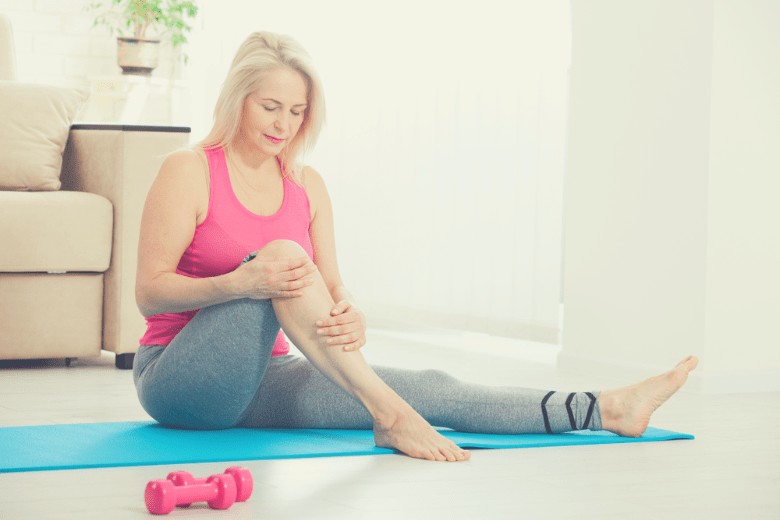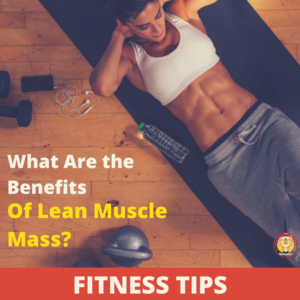The Bottom Line (TL;DR):
- Joint pain can affect any age group or activity level
- Common causes of joint pain are due to activity, injury, or simply old age
- There are various ways to address your joint pain depending on the severity of your joint pain – but always remember to consult with a medical professional before doing so
I’ve been swimming for exercise for most of my life as a competitive swimmer and now simply for exercise.
Last year I suffered from tendinitis, which more specifically for my case – swimmer’s shoulder.
Due to this annoying problem, I needed joint relief. Fortunately, I discovered ways to fix some of the joint issues I had.
In this article, I’ll define joints, joint pain, and then I’ll list and explain 10 instant solutions to fixing your joint pain.
What Are Joints?
Of course, you’ve heard of the word “joints,” but do you know exactly what they are? Joints hold two bones together.
They are located at the bones’ ends and allow for your skeleton to move.
What is Joint Pain?
When injury or disease interferes with joints, you can experience joint pain, ranging from minor to serious.
Various conditions can lead to joint pain. To explain, here are four common ones:
Tendinitis
This is an inflammation of the tendon. A tendon is a fibrous cord attached to a bone or a muscle. When you experience tendinitis, you feel pain right outside the joint.
You can feel this pain around your knees, shoulders, wrists, elbows, and heels. As I mentioned above, when I experienced tendinitis it was in the form of swimmer’s shoulder.
However, it can also manifest itself as tennis elbow, pitcher’s shoulder, golfer’s elbow, etc.
Therefore, vigorous participation in competitive sports, such as baseball, swimming, tennis, basketball, etc., can lead to tendinitis.
Age, or growing older, can lead to it, as well.
For example, I rarely experienced swimmer’s shoulder when I was younger, but it happened more than once as I grew older.
Bursitis
Bursitis is a painful condition where small sacs filled with fluid, known as bursae, are inflamed. Bursae put a cushion around tendons, bones, and muscles near your joints.
This condition occurs mostly in areas that receive repeated motion, such as the shoulder, hip, and elbow. However, it can also affect the knee, heel, and the base of the big toe.
Gout
Gout is a condition created by a buildup of uric acid, a waste byproduct. The buildup creates intense pain in your feet and toes joints, especially your big toe.
Failure to treat gout can lead to chronic gout, which can permanently damage your joints.
Middle-aged men and women, alcoholics, and those with high blood pressure, thyroid disease, kidney disease, etc., are at risk.
Rheumatoid Arthritis
Rheumatoid arthritis is a chronic inflammatory disorder. It can affect your joints, but it can also affect other body parts such as your eyes, lungs, heart, skin, etc.
It affects the lining of your joints, which causes swelling and pain. Worst case scenario is that it can result in joint deformity and bone erosion, such as osteoporosis.
10 Instant Solutions to Fixing Your Joint Pain
Joint pain is annoying to deal with, but you can cure it in most situations.
Now that we’ve discussed joint pain and examples of joint pain, here are 10 instant solutions for joint relief.
1. Medication – Over-the-counter and prescription
The traditional or conventional ways to deal with joint pain is with over-the-counter or prescription medication.
Over-the-counter medicines, such as over-the-counter acetaminophen for this kind of pain, comes in many brands.
You can find such medication at drug stores, big retail corporations, online, etc. Purchasing over-the-counter medication is done without a doctor’s advisement.
However, it’s always advised to get counsel from a doctor if the pain you’re experiencing is excruciating and consistent.
Prescription medication is legally given only by a medical professional. This medication tends to be much stronger than the over-the-counter variety.
For example, Vicodin or Percocet are two forms of prescription pain medication.
The dangers of such medication are the possibility of side-effects, addiction, and withdrawal.
In fact, in the United States, addiction to prescription medication has become an epidemic in some regions of the country.
2. Topical Solutions
A way to treat joint pain without having to consume medication orally and without the worry of addiction or withdrawal is with a topical solution.
You take these solutions and spread them directly on the area where you are experiencing pain.
Today, these topical solutions contain improved ingredients to address the pain, such as menthol and camphor, which block pain sensations.
They are typically in the form of over-the-counter medication and are not as strong as a prescription.
3. Cortisone Injections
Another way to get joint relief is with cortisone shots. These are shots that will remove inflammation and pain in some body regions.
Cortisone injections are typically put into the knee, shoulder, ankle, hip, etc.
A cortisone injection is administrated by a medical professional. Therefore, you would typically get one in your doctor’s office.
There are potential side effects with cortisone injections.
Thus, the number of shots you can get is limited, and this kind of shot is often administered no more than four times a year.
4. Hot and Cold
Another traditional way to treat pain, without the danger of side effects, is by alternating hot and cold treatment on painful joints.
Cold Therapy for Joint Pain
Using cold therapy helps decrease blood flow, reducing the pain and swelling. There are various ways to apply cold therapy.
You can purchase an ice pack, for example. However, you can also take a bag of frozen peas and use it.
(When I had swimmer’s shoulder, I found that a bag of cold peas wrapped around my shoulder easier.
Plus, once I was done using the bag for pain, I still had the peas I could cook and eat!)
Heat Therapy for Joint Pain
Using heat therapy helps increase the blood flow, which helps to relax muscles, stimulate blood flow, improve circulation, reduce pain, and reduce stiffness.
Heat therapy can be heating pads, a hot bath, etc.
So how should you alternate between hot and cold therapy? You can warm up your joints in the morning with hot therapy, such as a hot bath.
Then later in the day, apply cold therapy to joints to reduce swelling and pain.
5. Massage
An alternative way to deal with joint pain is through massage.
It’s a method found in ancient civilizations in China, Greece, India, etc. It is another method that can be good for the body and that has few to no side effects.
Massage comes in various forms such as Swedish massage, deep massage, sports massage, etc. I’ve had many massages in my life given to me at spas, and for me, it’s been beneficial.
In other words, the massage therapists have been able to reduce or remove my pain through their manipulation of my muscles by pressing and rubbing.
Massage has been shown to not only reduce pain but also increase relaxation, improve circulation, reduce stress, etc.

6. Acupuncture
Like massage, acupuncture is an ancient method.
Originating out of China, acupuncture is the process of inserting tiny needles to specific areas of the body to restore qi’s flow (life force), energy, relaxation, and healing.
There are approximately 1,000 acupuncture points on the body.
Acupuncture is still a bit mysterious, but one of the theories is that the practice stimulates the release of endorphins, representing our body’s natural pain-relieving chemicals.
An acupuncturist applies acupuncture.
However, it’s important to note that even though this is an alternative procedure, in the United States, for example, at least 22 states require a person to be certified to practice acupuncture.
7. Lose Weight
Unfortunately, America has an obesity problem.
In fact, over 40 percent of Americans are obese, and the amount of obese people has increased by approximately 12 percent since 1999.
Obesity is associated with a boatload of bad conditions, including heart disease, high blood pressure, type 2 diabetes, joint pain, and more.
Therefore, if you are overweight or obese, losing weight by eating a balanced diet and exercising can reduce your joint pain.
A word about diet, a Mediterranean diet, for example, is a healthy diet that can help you lose weight and get healthy and fit.
This kind of diet includes antioxidant-rich fruits and vegetables, oily fish, olive oil, almonds, etc. These help to reduce joint pain.
8. Exercise
Along with eating a healthy diet, exercise is good for keeping the joints healthy. Of course, overuse of a joint resulting in a condition such as swimmer’s shoulder is not the goal.
The goal is to keep the joints moving and in healthy working older.
If you spend your life on the couch watching TV, you’re not moving your joints, and you’re not contributing to their movement.
When you exercise, you improve the performance of your joints and benefit from other things that exercise gives you, such as a reduction in depression and improvement in sleep.
Some form of exercise is indeed gentler on joints than other exercises such as yoga, walking, and swimming. Swimming, for example, is gentle on the joints.
This is because it’s a low-impact exercise. Swimming in the water’s buoyancy puts less impact on our skeletons.
Now, if you’re a competitive swimmer like I used to be, and you’re practicing three to four hours a day, that is not a typical schedule.
In other words, your arms and legs are moving more than someone who is swimming for a half-hour a day for exercise.
Swimmer’s shoulder is typical for competitive swimmers who are always moving their shoulders for hours and hours.

9. Physical Therapy
For those with acute joint pain, chances are you’ll be sent to a physical therapist. It’s also common for medical doctors to refer individuals to physical therapists for further treatment.
A physical therapist is a trained, licensed professional who will survey your condition and then conclude what needs to be done to restore movement and reduce pain.
These solutions will include specific stretches and movements. Sometimes it can be painful to go through these stretches and moves, depending on the condition.
However, the goal is to restore you to functionality.
Physical therapy is typical for joint pain, sports injuries, carpal tunnel syndrome, arthritis, etc. Some physical therapists or PTs specialize in specific individuals, such as specializing in athletes or specializing in the elderly.
Physical therapists are found in hospitals, clinics, sports teams, etc.
10. Rest
Of course, rest is one of the best ways to treat joint pain. When I had swimmer’s shoulder, I didn’t continue swimming right away.
I rested my shoulder for a few days. When you rest your joints during pain, you allow your body to repair itself naturally and prepare for a return to movement.
Final Thoughts
These 10 solutions for joint relief are ways to rid yourself of the pain that can happen to your joints. Many of these are useful to incorporate together.
For example, you injure your joints, so you incorporate hot and cold therapy. While you are focused on hot and cold treatment, you also give your joints a rest from your exercise.
At the same time, you’ve decided that you need to improve your diet by incorporating a healthier diet, such as a Mediterranean diet.
You also schedule a few massage treatments to help your joints return to functionality.
Of course, if your joint pain is severe, a physician, with your approval, may decide to put you on medication.
Whether you choose a traditional or alternative form of treatment is a personal choice.



